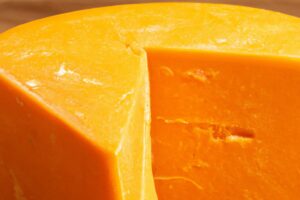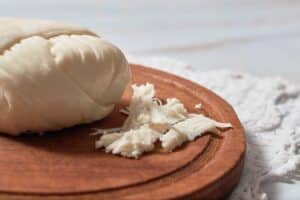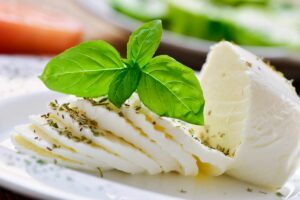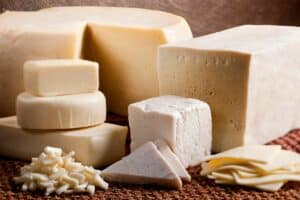Gorgonzola ranks in the top five cheeses that hail from Italy, alongside the likes of Parmigiano. However, traditional blues cheese procured from northern Italy has a unique flavor profile which makes it very distinguished.
There’s nothing like stumbling across a recipe that interests you, and it calls for Gorgonzola cheese. Chances are you didn’t have it, and you had to find a different recipe. It’s even worse when you can’t find it in your immediate area.
Well, the good news is that there are plenty of replacements that you can use for a Gorgonzola cheese substitute, including Roquefort, Blue d’Auvergne, Stilton, Shropshire Blue, and Goat Cheese.
They vary in terms of similarity, but overall, your dish won’t be too drastically different if you choose any of these tasty alternatives.
What is Gorgonzola Cheese?
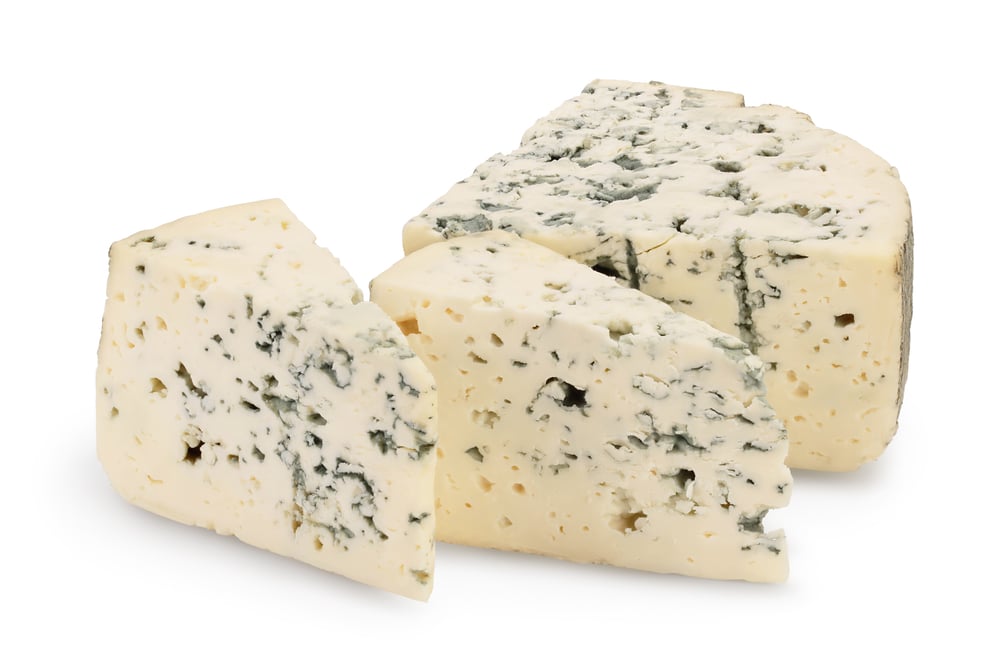
You can find Gorgonzola close to the borders of Italy; characterized by lush plains situated beside stunning lakes and rivers is the kind of landscape that surrounds the province, Gorgonzola. This is the home of Gorgonzola Cheese, its namesake.
Gorgonzola has the appearance of porcelain; this blue mold cheese is decadent in flavor. The cows feed on natural forage, on pastures that spread across the regions of Piedmont and Lombardy. These cows deliver full-bodied milk to the creameries. These regions receive credit for the unique flavors of Gorgonzola cheese.
Gorgonzola was originally named Stracchino di Gorgonzola. Stracchino translates to “tired,” referring to the fatigued cows migrating from the Alps to the lowlands. Back then, the locals noticed that the herds that made that migration made dairy with higher levels of butterfat than the cows who did not make the trip and rested in the pasture.
At one point in time, Gorgonzola cheese used to be made in wet and dark caves. This process could potentially take up a year to mature. However, thanks to today’s innovations, this process only takes 2-3 months, thanks to Penicillium Gorgonzola.
Gorgonzola is a versatile cheese that you can use on pizzas, pasta, or risottos. Aesthetically the blue and white marbling of the cheese adds character to a cheese board, and it pairs well with honey, pistachios, and grapes.
Gorgonzola is often referred to as blue cheese and is made exclusively with cow’s milk. This cheese usually has a milder flavor profile than other blue cheeses. Gorgonzola’s deep roots in Italian artisanship set this cheese apart from different blue cheeses.
What Does Gorgonzola Taste Like?
There are two types of Gorgonzola cheese. When the cheese is young, it is creamy and soft. It has delicate notes of butter as it approaches a subtle acidic finish. Mature versions of blue cheese are more robust in flavor while having a pungent bite throughout and until the finish.
You can melt Gorgonzola into sauces seamlessly and beautifully. This is the kind of cheese you’re most likely to cook with. The other Gorgonzola cheese is called Piccante, and it possesses a sharper flavor. However, Gorgonzola has an intense and strong flavor with a slightly sweet aftertaste.
5 Recommended Gorgonzola Cheese Substitute
The 5 most common cheese like gorgonzola:
- Roquefort
- Bleu d’Auvergne
- Stilton cheese
- Shropshire blue
- Goat cheese
Roquefort
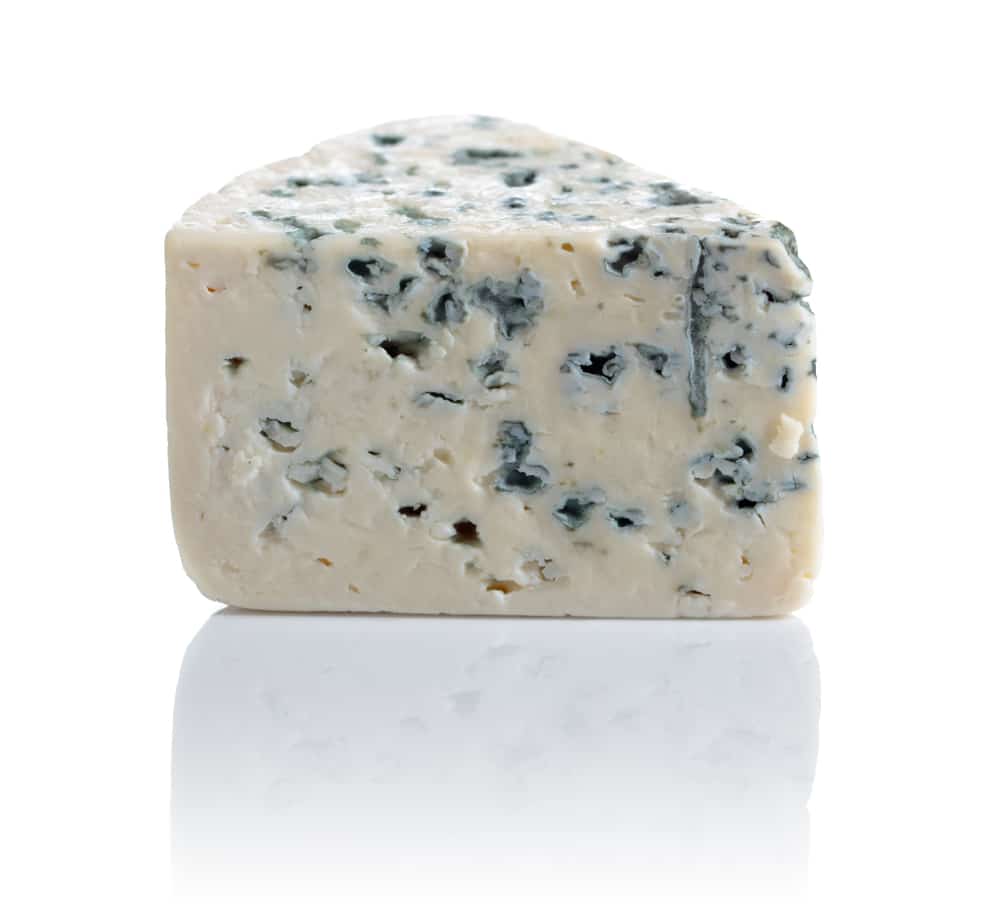
Roquefort is a cheese that’s produced in France. Like its Gorgonzola counterpart, Roquefort cheese is best when eaten at room temperature. Moreover, Rouquet is considered a delicacy for old gourmet dishes and heart plates similar to Gorgonzola. Additionally, it pairs nicely with passito, Marsala, and red wines.
The mold forms in milk have two distinct sources: Gorgonzola’s appearance is due to the addition of ‘penicillium’ mold spores responsible for forming the greenish veins giving the cheese its pungent taste and aroma; in this case, the mold gets induced.
On the other hand, Roquefort produces its mold naturally. This mold is possible thanks to the naturally occurring penicillium in the Combalou caves.
Gorgonzola cheese is less creamy and more firm than Roquefort cheese. Both kinds of cheese have intense aromas. However, Gorgonzola carries earthly hints of mushrooms with a kick of cooked butter. It is also a saltier cheese. Gorgonzola can be melted down into risottos and polenta. It also pairs well with walnuts and pears.
Conversely, authentic Roquefort is buttery and mild with notes of dried fruit. Furthermore, this cheese derives from sheep’s milk cheese, and Gorgonzola comes from cow’s milk.
They both taste tangy, but the Roquefort had more of a milder flavor, but it’s still the perfect Gorgonzola cheese substitute. If you had to pick the best replacement for taste and appearance, go with Roquefort.
Bleu d’Auvergne
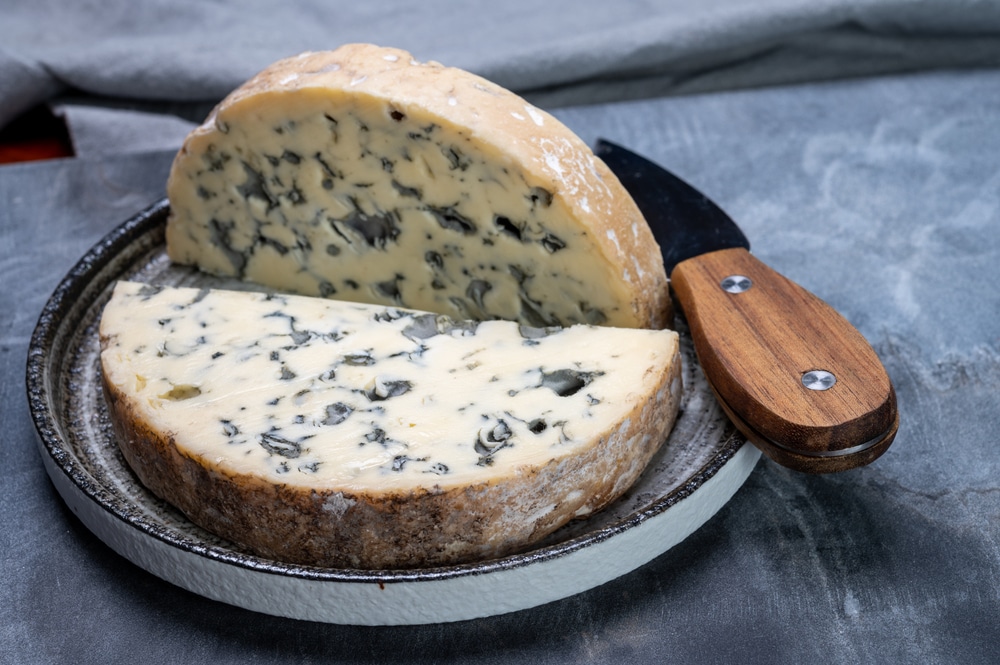
Bleu d’Auvergne is a french blue cheese that makes for an excellent Gorgonzola substitute. It’s similar in flavor, though the french cheese has a hint of spice that the Gorgonzola doesn’t. It is made with cow’s milk and packs a tangy and savory kick, but it’s not as strong as Gorgonzola.
It has a strong smell, much like Gorgonzola, it’s salty, creamy, moist, and sharp, and it crumbles similarly to the way the Italian blue cheese crumbles. Yet, Gorgonzola is a bit firmer. If you want to match the flavor profiles and textures as closely as possible, go for a Bleu d’Auvergne that has aged for a while because this will give you the intensity you would get from Gorgonzola.
Both pieces of cheese are also injected with the penicillium glaucum mold, which produces those blue mold veins throughout the cheese. The Bleu d’Auvergne can be melted or crumbled on top of other foods, which is close to how Gorgonzola is used, typically as a topping on pizza or pasta, or melted into a hearty risotto.
This is the best Gorgonzola replacement for salads and pizzas, as the crumbly texture is most similar to Gorgonzola when used as a topping.
Stilton Cheese
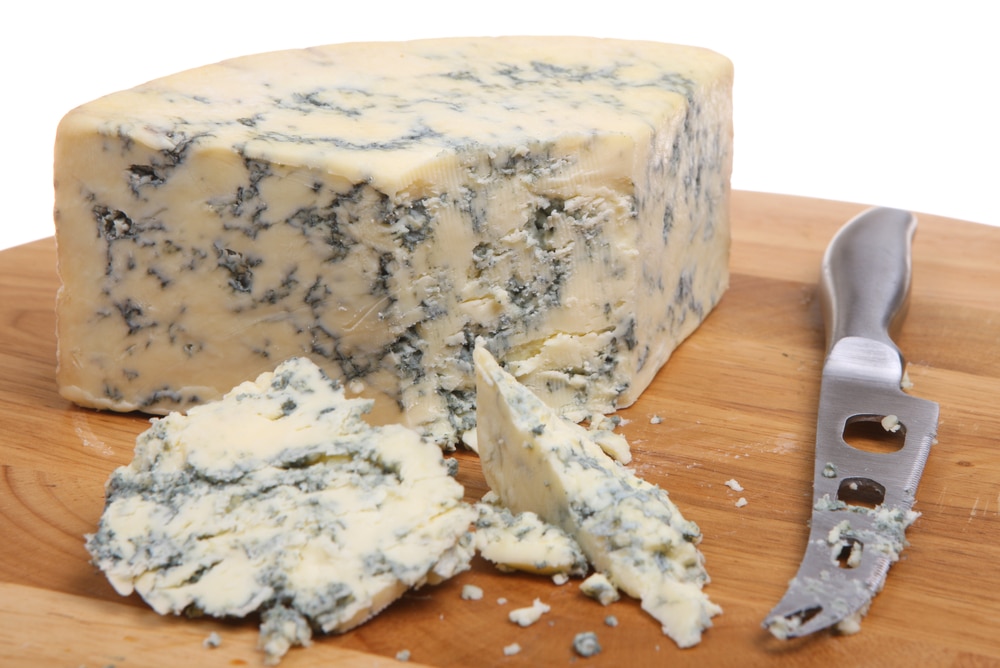
Stilton cheese comes from a small area in England, and it’s an excellent replacement for Gorgonzola based on the taste and texture.
There are notable differences, but you can use the Stilton cheese in cold or hot recipes that you’d usually opt for Gorgonzola. The taste and smell of Stilton are strong; you get nutty, creamy notes with a salty and tangy finish.
Gorgonzola is a soft blue cheese, while Stilton is a semi-hard blue cheese. They both have a blue-veined appearance. This cheese is white and creamy, while Stilton is amber or yellow, almost orange, and it is firmer and more crumbly.
Despite the difference in appearance, the taste of the two kinds of cheese is more similar than others that look more like Gorgonzola.
Stilton also comes in two varieties, white and blue. The blue version is more closely related to Gorgonzola, as the white version doesn’t contain any penicillium and instead has fried fruits often added.
You can easily use the Stilton cheese to crumble on top of a salad or pizza, or you can melt it into a dish. However, be mindful that the color will be different than if you used Gorgonzola.
When making the comparison, Stilton is the second closest cheese in terms of flavor. If you want a slightly milder version of Gorgonzola and welcome the difference in color, choose Stilton.
Shropshire Blue
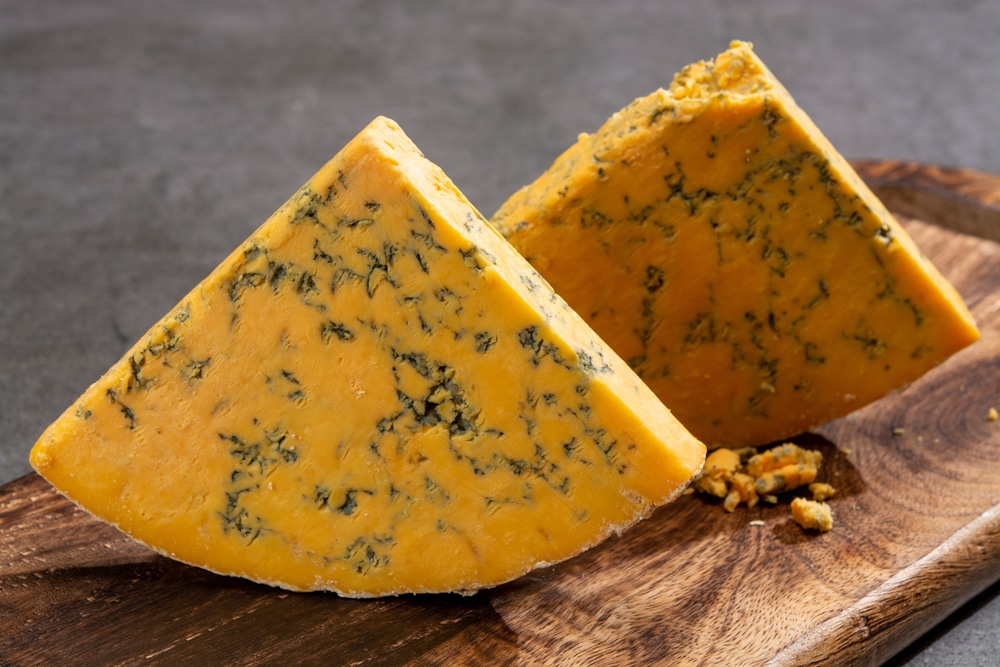
Shropshire Blue is a type of blue cheese that comes from pasteurized cow’s milk. It features vegetable rennet, a concoction of plant enzymes that causes coagulation. This English cheese gets its orange color from annatto, a natural food coloring type.
One other similarity between Gorgonzola and Shropshire is the external rind. The rind on Shropshire is a deep auburn color that is also inedible. Gorgonzola has a moist, thin rind that you also should not eat. The blue veins on Shropshire are from the same fungus used to make Gorgonzola.
Though Shropshire looks like cheddar because of the color, it is a soft, intense, and sharp cheese. The sour, tangy notes can closely resemble Gorgonzola, making it an excellent substitution in nearly every dish.
Shropshire and Stilton are almost one, and the same, except Shropshire is on the softer side with a slightly spicy note that Stilton doesn’t have. All in all, Shropshire and Stilton are equally good alternatives when it comes to UK blue cheese to swap with Gorgonzola.
Goat Cheese
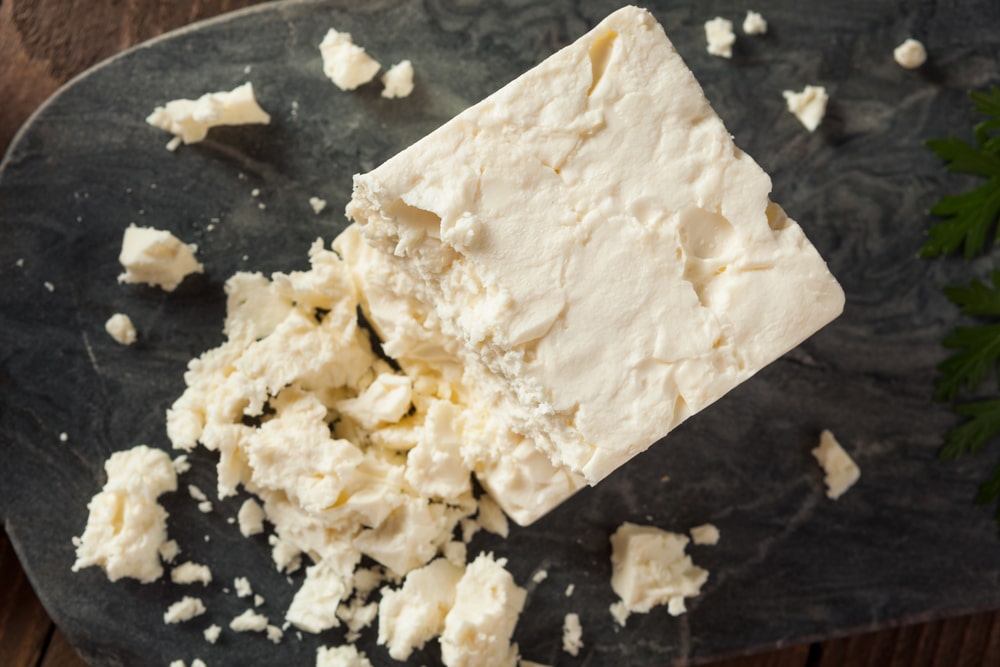
Goat cheese is a well-known creamy cheese that pairs well with multiple foods. You can replace Gorgonzola with goat cheese, but be mindful that it will be similar in texture for the most part but not flavor per se. It’s not nearly as strong or sharp as Gorgonzola, but it does have that tangy and earthy element.
This cheese comes from goat’s milk, and Gorgonzola comes from cow’s milk. Goat cheese also doesn’t have the signature blue veins that the Italian cheese has. Goat cheese is also much softer in general than Gorgonzola, and it doesn’t have that crumbly texture.
Goat cheese has a lower fat content and sharpness than Gorgonzola, so it’s great for those on a diet or who don’t prefer the overall intensity of the famous Italian blue cheese.
It is the most versatile cheese on the list in terms of flavors and foods that you can pair it with. It goes well with fruits, nuts, pizza, pasta, bread, and the list goes on. It is the most different from Gorgonzola, though you would only use it if you looked for the texture and not necessarily the flavor.
Need something similar to goat cheese? See suitable goat cheese alternatives.


